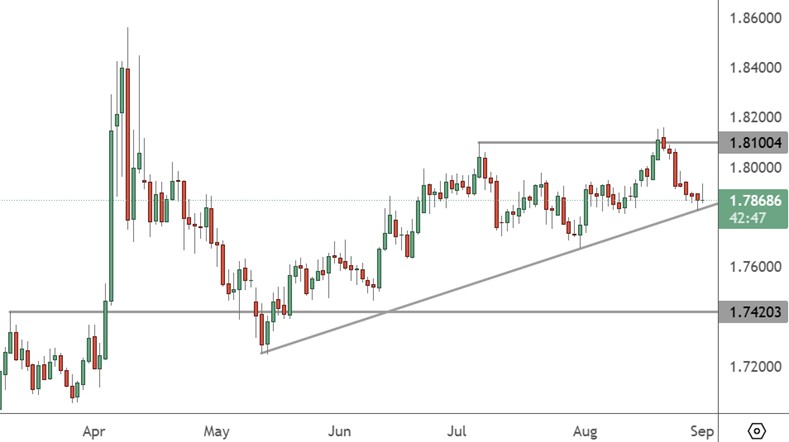The EURAUD exchange rate has important economic data ahead with European inflation and Australian GDP.

EURAUD – Daily Chart
The price of EURAUD hit resistance at 1.8100 and has retreated to the uptrend support line that began in May. A move below the support level could open the way for a move to 1.7420.
The data begins on Tuesday at 5:00 p.m. HKT with preliminary figures for Eurozone consumer prices. The markets expected to see a reading of 2.2% and 2.3% last month. Any deviation could lead to a change in positioning for euro traders.
Moving into Wednesday’s session, there is the release of Australian GDP growth numbers at 9:30 am. The Q2 reading is expected to show a 0.5% gain from 0.2% in the previous release.
The annual figure is expected to increase to 1.6% from 1.3% previously. A stronger reading would likely boost the Australian dollar and demonstrate that the country is weathering the U.S. tariffs. Those numbers will be followed by speeches from Reserve Bank of Australia Governor Michelle Bullock at 2 pm, and from European Central Bank President Christine Lagarde at 3:30 pm.
The Reserve Bank of Australia has lowered the interest rate three times, bringing it down to 3.6%, but the economy has struggled to rebound. The RBA warned last month that it could not sustainably grow at more than 2% because of weak productivity growth.
Westpac senior economist Pat Bustamante expects to see the June quarter GDP data grow more slowly in the first half of 2025 compared to Q2 2024.
“While ever the recovery continues to be fragile and unconvincing, labour market conditions will loosen, and unnecessary slack will build up,” Bustamante said.
“The rebalancing of growth from labour-intensive public demand to more capital-intensive private sources of growth will exacerbate these risks”.
Analysts are concerned that a significant portion of Australia’s current GDP growth is being driven by government spending. The RBA is expected to cut interest rates another two times by March 2026, and the EUR/AUD is likely to move this week based on the dynamics of expected RBA rate movements.


